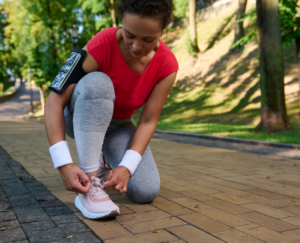Although a common pain for athletes, tennis elbow doesn’t afflict only tennis players.
Although a common pain for athletes, tennis elbow doesn’t afflict only tennis players. Tennis elbow, or lateral epicondylitis, is a form of tendonitis caused by an overload of wear and tear to the elbow, wrists, and forearms. The first sign of this condition is often pain, burning, or tenderness along the outside of the forearm and the bony knob on the elbow. Another indication and symptom of tennis elbow is a weakened grip.
Each year more than 200,000 cases involving tennis elbow are treated in the US in athletes and nonathletes alike. Often self-diagnosed, pain is usually the primary symptom. Because this joint is involved in so many of our daily tasks, conditions of the elbow can severely impact our lives.
The spin on tennis elbow
What causes the pain often associated with tennis elbow? The discomfort is due to inflammation and damage to the tendons that bend the wrist backward. Although the damage is in the elbow, the pain often occurs while doing things with your hands. Over time the pain may also extend into the forearms.
The main cause of tennis elbow is constant repetitive motion of the muscles used to lift, grip, or twist. Heavy wear and tear from sports-related injuries are not the only way to develop a tennis elbow. Everyday activities that lead to overuse of the elbow, wrist, and forearm such as texting, typing, cleaning, lifting–or even turning a doorknob, can also lead to this painful condition. This constant motion over time leads to inflammation of the tendons and micro-injuries to the bones.
Get a grip on treatment options
Treatment options available for tennis elbow include: icing the elbow, using an elbow strap, taking nonsteroidal anti-inflammatory (NSAIDs), performing a range of motion exercises, and physical therapy. Surgery or elbow replacement may be required in some advanced cases.
Your doctor may recommend the following self-care measures:
- Rest. Try to take a break from activities that aggravate your elbow pain.
- OTC Pain relievers. Over-the-counter pain relievers, such as ibuprofen or naproxen may help with discomfort.
- Ice. Apply ice or a cold pack for 15 minutes three to four times a day.
Serving up excellent care
Living with pain causes undue stress, which can be harmful to your overall health. When we worry or become anxious, our bodies release a hormone called cortisol. Cortisol at normal levels is a helpful natural steroid, but when we stress too much and for too long it can result ininflammation that exacerbates other conditions.
OrthoArkansas’s elbow specialists treat a wide variety of conditions and injuries of the elbow including:
- Tennis elbow other cumulative stress injuries
- Golfer’s elbow
- Biceps tendon tear at the elbow
- Throwing injuries of the elbow
- Elbow replacement













